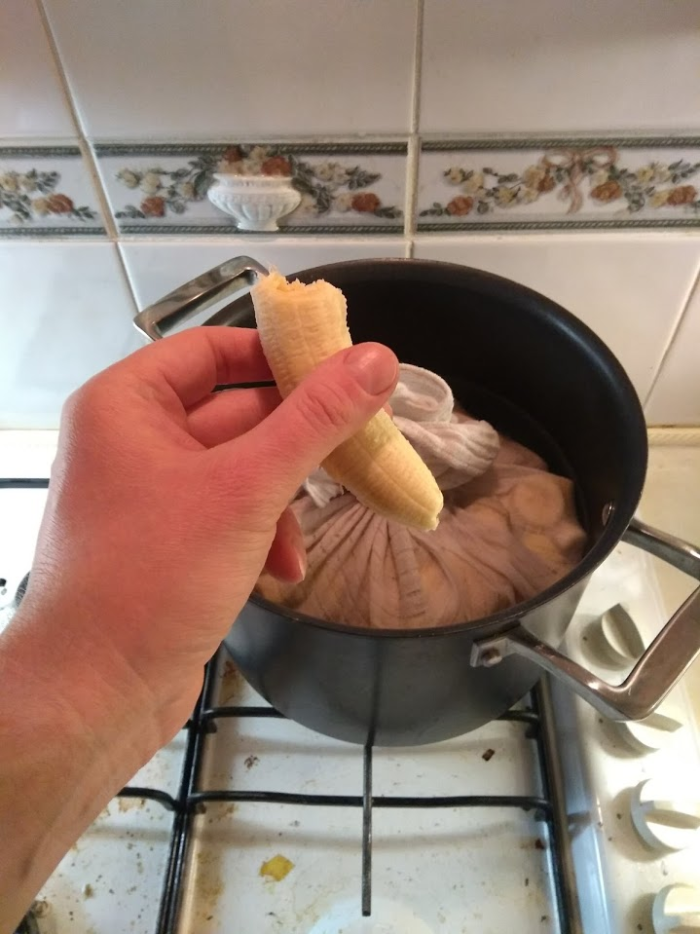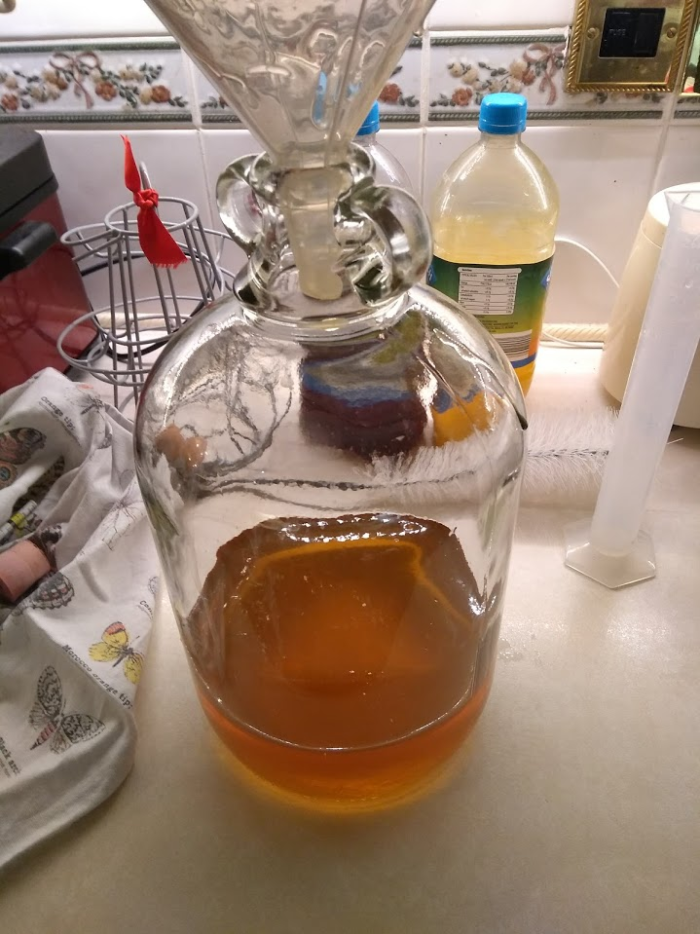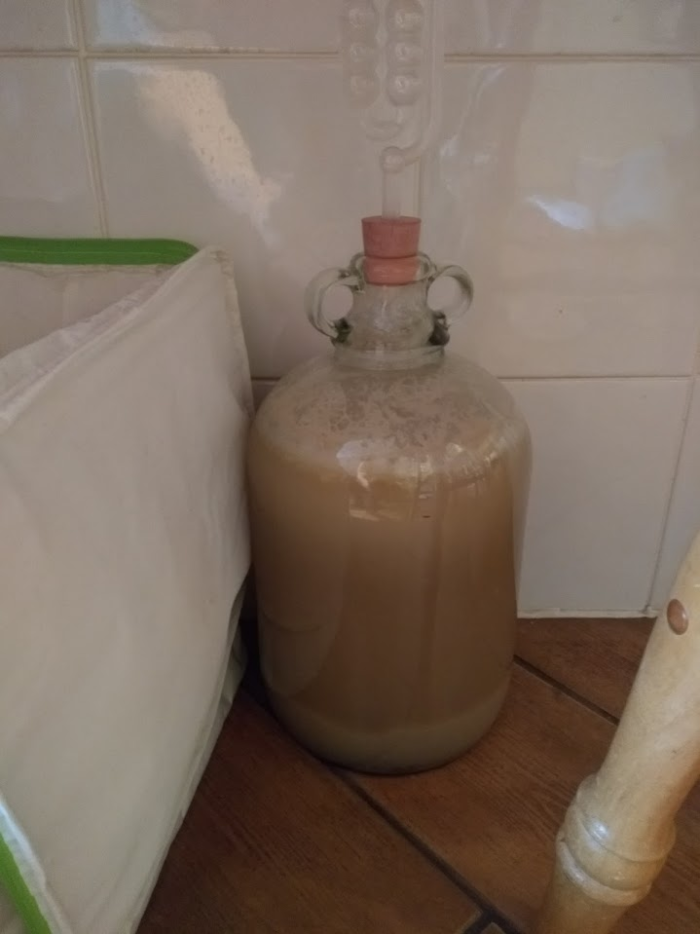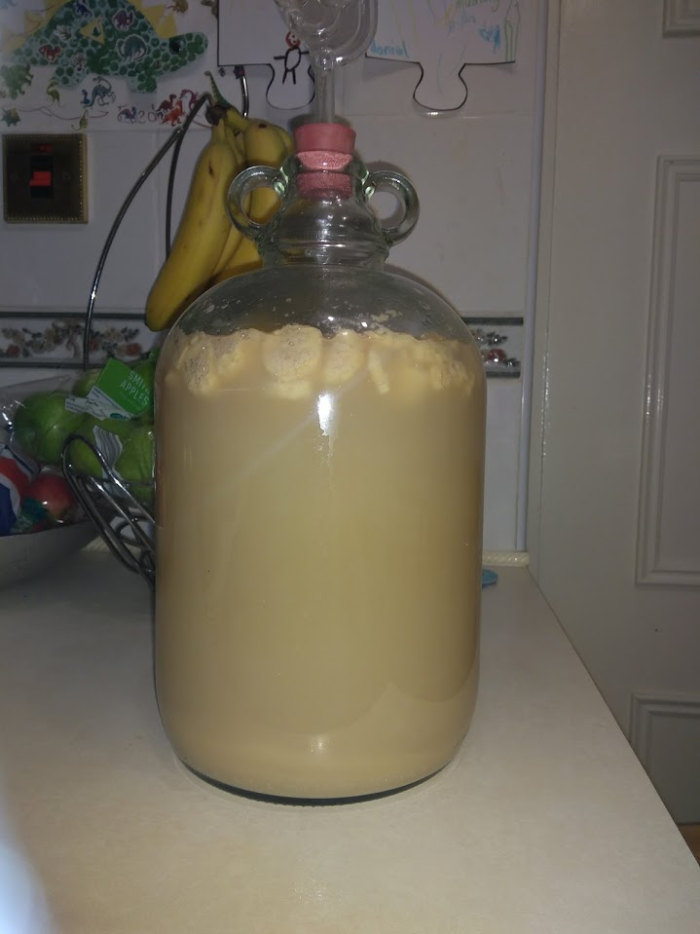Introduction
In a slight diversion from my normal tech entries, it’s time to talk about something I like doing: creating alcohol. I’ve dabbled in the old home brew before; starting with homebrew beer kits and then going into some bespoke drinks.
I’ve never actually made beer from malt and hops, mainly because its a lot of work and requires a significant amount of equipment. Instead I start messing about with quick brews that can be fermented in five litre demi-johns, meaning I haven’t lost too much if it tastes awful.
(I also don’t drink enough at home to go through the average 40 litre fermenter before it goes off.)
My previous experiments have been quite sane: trying to make cheap cider from bread yeast and apple juice (it’s surprisingly good and I don’t even like cider) to making some more exotic alcohols, such as nettle beer, elderflower wine and a fruity melomel (fruit flavoured mead).
My strangest brew was started after a discussion in the beer garden of the pub; where one of my mates mentioned that he would love to try sprout beer. As this was winter in the UK and the humble brussels is ubiquitous, this was a challenge I could do.
So long story short: boiling sprouts with sugar, mashing them, filtering them, making the house smell of rancid brassica, leaving the demi-john of proto beer for over a year because I couldn’t face bottling it, eventually my mate tried it. He lived, so I count that as a success.
Anyway, one of my work colleagues likes bananas; so I though it would be the time to do him the honours of a special alcoholic beverage.
After consideration of what could pair with banana and ruling out stuff that I didn’t have the equipment for, I decided on a simple banana melomel. The recipe for this is simple: honey, bananas and yeast.
As there is sugar from the honey and the bananas, it should be strongly alcoholic (in double figures).
Getting Started
So, I went shopping to a German supermarket brand which is common in the UK:

That’s around two kilos of bananas and about the same of honey.
I’ve used cheap honey, as, after all, it’s not for me to drink. The total cost came to about £7.00.
Step one was to soak the honey in warm water (hot tap, so about 40 Celcius) to soften it.
With this happening I sterilised my demijohn and other equipment (rubber bung, funnel and a large jug).
Then I sliced up every one of those bananas into coin slices. I left the skin on with about half of them, in case that helped.
The bits of banana were through into a rough bag made from a muslin, tied up with a scrap of wool I stole from t’other half. Just to horrify the recipient; this was a muslin that had previously been used as a generic clean up cloth when my sprogs were babies (it had been laundered a few times though).
Here you can see that I needed to really clean my hob:

This was placed in a pot, covered with water and simmered for around 30 minutes until the bananas started to break down.
At this point the honey was added to the demi-john:

Once the bananas had been cooked, the water was added to the demijohn and then I start the painful job of squishing the all last banana juice out of the muslin bag. Because I’d forgotten to sterilise my colander , I started doing this with a potato masher.
Then I continued by hand. If you’ve never squished a bag of 50 degree mushed bananas you’ve never lived!
Eventually all the banana juice was added to the demi-john, shaken and left to cool to 20 degrees. Yeast was added and a bubbler was fitted to the top. Here it looks rather unappetising.

The original gravity taken was an unbelievable 1120, which holds out for it to become quite strong.
First Fermentation
I actually had to replace the bubbler after the first night as it had fermented enough that foam had replace all the water:
As we can see after a couple of days its started to separate and there’s quite a bit of foam there.

First deracking
After a week most of the fermentation had stopped, so I deracked it into a clean, sterile demi-john.
To try and enhance the flavour I added an extra bunch of bananas that I’d peeled and chopped up. I added more yeast as the first lot had burnt themselves out.

At this point it was about 6% alcohol and surprisingly smooth. The taste was mainly honey with a hint of something, but not strongly banana. After a few sips I started getting the headache that indicates the wrong sort of alcohol, so it needs a lot more fermentation.
It is still rather brown in colour.
Second deracking
Two weeks later, I was seeing little fermentation activity, so I deracked into a clean, sterile demi-john to mainly get rid of the solids.

The colour is much more yellow now and the test is becoming less honey like, but there’s still not much banana.
It has a strong cidery smell. An estimate of the alcohol content is around 13%, which I regard as a success!

Bottling
One week later, with no further sign of fermentation I bottled it into 10 330ml and 1 500ml bottle.
Final pre-bottling sample is about 14%. It’s still smooth to the taste, but there’s less of a honey flavour and a subtle banana taste.
Ideally it should be aged for between one to two years before it will be at its best.
